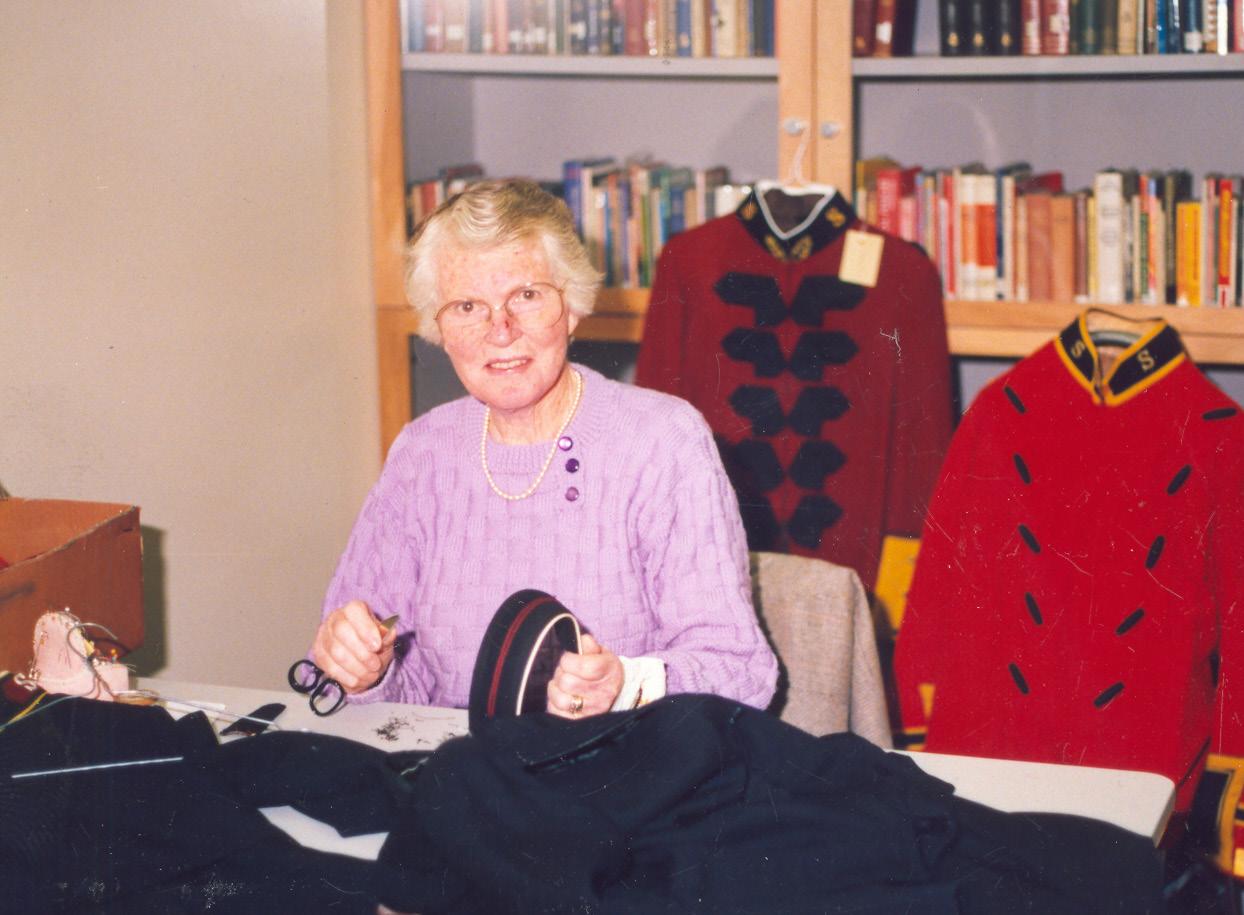
3 minute read
A Stitch in Time
Salvationist Nola Bradwell (nee Carrington), born in 1918 and died in 1998, was married to well-known author and educator Cyril Bradwell. Together, as a retirement task, Nola worked with Cyril to establish The Salvation Army Archive collections; preparing the archival items that would eventually be housed at Plowman Resource Centre. This three-part series is from the book titled: The crafts of cloth, needle and thread: Nola’s story, written by her daughter Helen May.
Nola was diagnosed with lymphoma cancer in 1978 and retired from Calvary Hospital, but with chemotherapy, periodic radiation and times of remission, she embarked on a new project working alongside my father in The Salvation Army Archive. This combined her tailoring, seamstress and mending skills and her love of order, display and arrangement. Nola’s health was not robust, but for almost twenty years and, at times, several days each week, she was collating, cataloguing and repairing a growing collection of historic Salvation Army uniforms and the paraphernalia of old badges, trims, bonnets, caps, textiles, artefacts and photos. This work became the highlight of Nola’s long career [as recorded] in The crafts of cloth, needle and thread. The documented footprint of her work is, nevertheless, light by comparison with Cyril’s archiving and historical writings.
Establishing a Salvation Army archive had been a concern of my father since researching his MA thesis, awarded in 1950, on the history of The Salvation Army in New Zealand. The idea of an archive was first seeded in discussions with Commissioner Alfred Gilliard in the 1960s. In 1975 Commissioner Ernest Elliott established The Salvation Army Historical Trust, chaired by Cyril with Captain Laurence Hay as secretary, who had recently completed a postgraduate library qualification. The story of Laurence and Cyril’s establishment of a functioning and funded archive and research centre that was both appropriately housed and staffed is recounted in Cyril’s book Touched with Splendour (2002). There is a brief, albeit fulsome, mention of Nola’s work in Cyril’s account. Laurence similarly acknowledged that ‘Nola’s contribution to the establishment of the archive was certainly of major significance in both quantity and quality.’
The Salvation Army’s archival documents and artefacts had been stored ad-hoc in the old Officer Training College in Aro Street, Te Aro, along with the old uniforms, bonnets and caps mainly used by cadet officers for dramatic tableaux. This misuse had caused damage and loss. In 1987 (now) Major Laurence and Major Margaret Hay were appointed to the college, with Laurence also designated as the Salvation Army’s first official archivist. After acquiring temporary space near the Cuba Street Territorial Headquarters (THQ), work began on cataloguing and sorting both the stored and new material that began to arrive. For both Nola and Cyril, working with Laurence and later Lt-Colonel Moira Wright, the archives became a shared and fulfilling retirement occupation, alongside Cyril’s ongoing historical research and writings.
There is no record of Nola’s work at the archive except the physical collection itself. However, in surviving (and mainly undated) letters written to me when I was living in Hamilton between 1984 and 1995, Nola frequently mentions that she had been working at the archive but gives little detail about what she was doing, and I regret that I did not ask her to record more.
Print copy can be purchased for $10.00 by sending an email to: archives@salvationarmy.org.nz; or print for free from the Archives website: archives.salvationarmy.org.nz/our-publications










